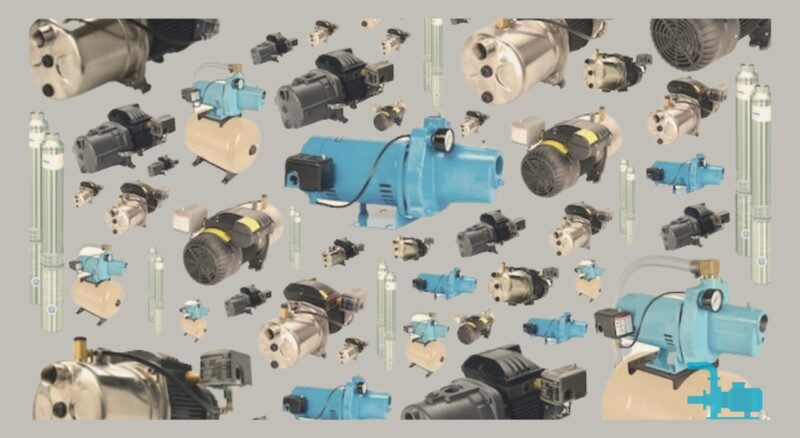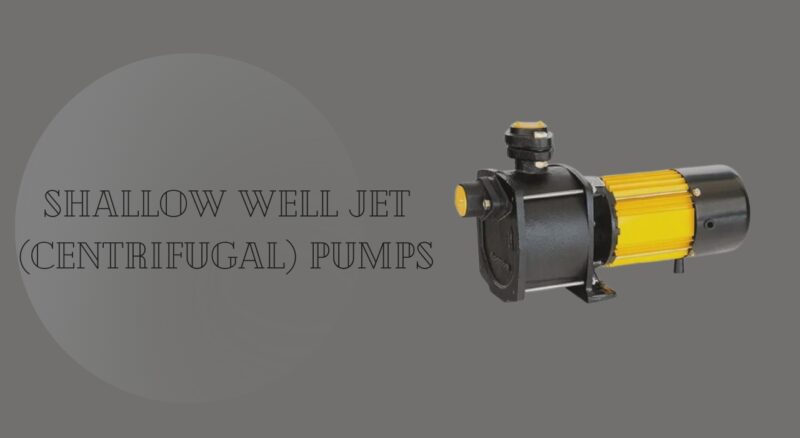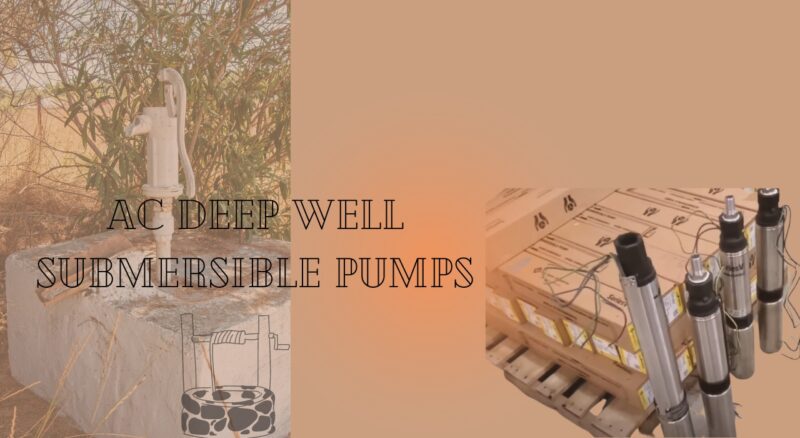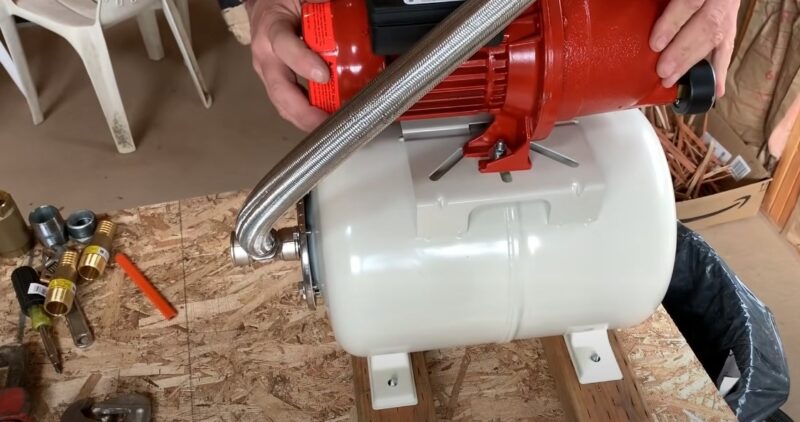If you are not careful when designing your off-grid water pumping system, your pump can be the single largest load on your solar, wind, or micro hydro power system.
But since that is not always possible, we will discuss the best pump options, why they are used, and how to make them more energy efficient.
We have a 200-foot (67-meter) drilled well next to our home (in the middle of our driveway due to poor planning) and our well overflows at about 1/2 gallons per minute. Very cool that it overflows but unusable by itself to provide our home with potable water because it is just at the level of our bottom floor, only produces 1/2 gallon per minute (2 liters per minute), and is under almost no pressure at all.
This overflowing water creates a big nuisance as there is always water pooling outside our home in the driveway in the summer and always ice building up in layers within a 15-foot (5-meter) radius of our well casing making our driveway unusable.
However, there is one advantage and that is the water is very easy to pump using a shallow well pump even though our entire well is 200 feet (67m) deep.
We use a submersible pump called the SQFLEX made by Grundfos. It is connected at 120 volts and has an AC/DC permanent magnet motor with no surge start-up. They actually can operate on 30-300 VDC or 90-240 VAC at 50/60 Hz with no extra components. Their internal electronics are designed to operate AC or DC and over a wide range of voltages.
However, you will get much more water at a higher pressure as the voltage increases. Ours is designed to pump 10 gallons per minute at 200 feet of water depth. It just happened to be the model we could find at the time and 10 gallons per minute is far more water than we could ever use.
The Sq Flex by Grundfos
Water Pump Goals for The Off Grid Home
1. We are trying to find a pump that will do the job but use the least amount of electricity.
2. Our second concern is to limit the surge of electricity required when the pump starts if you have a small to medium-sized inverter. All electric pumps surge when they first start up except a newer type of pump called a no surge or slow start pump.
3. Positive displacement pumps are generally the best choice for off-the-grid homes as they use less energy per liter or gallon of water pumped.
Choosing the Correct Type of Water Pump

The first consideration when planning your pumping system is the depth of the water in your well. We must know the static water level as well as the dynamic water level.
The static level is easy…
STATIC WATER LEVEL is the level of the water in your well when it is sitting there doing nothing (or the pump is not on).
The dynamic water level is much trickier to verify. It is the lowest level of water in your well after being used on a normal day.
In other words…
DYNAMIC WATER LEVEL is the lowest level the water will be in your well while you are using that water.
WE MUST USE THE DYNAMIC WATER LEVEL WHEN SIZING PUMPS AND DECIDING WHAT TYPE OF PUMP TO USE AS THE DYNAMIC WATER LEVEL IS THE POINT AT WHICH THE PUMP YOU CHOOSE IS WORKING THE HARDEST!
Shallow Well or Deep Well
Generally, if your well water is less than 25 feet below grade (ground level) it is considered a shallow well.
A shallow well will require a piston pump (driven by either AC or DC motor), shallow well centrifugal (jet) pump (driven by either AC or DC motor), or shallow well hand pump.
If your well’s water is over 25 feet down it is considered a deep well.
A deep well will require either a deep well submersible (AC or DC), deep well jet (centrifugal) pump, or deep well hand pump.
The Depth of The Well Is Irrelevant
The Depth of The Water Is What Counts When Considering Whether You Need a Shallow Well Pump or Deep Well Pump!
Foot Valves
All of the pumps mentioned below will need a foot valve installed at the end of the suction pipe to keep th e pipeline and pump full of water making it only necessary to prime the pump once.
Foot valves are a one-way valve or check valve made of plastic, brass, or stainless steel that have a plastic or stainless screen on the end to stop large sediment from entering the water system.
Brass and stainless foot valves are the most rugged, but plastic usually works fine in shallow wells.
They allow water into the pipeline but do not allow the water to drain back out of the channel.
Shallow Well Water Pumps
If the level (static and dynamic) of your water is less than 25 feet, you can and should use a shallow well pump. This pump could be a hand/manual pump, centrifugal pump, piston pump with an AC motor, or piston pump with a DC motor.
Shallow Well Hand Pumps
Hand pumps or manual pumps are exactly what they sound like.
They operate with human power. No electricity is required. You can either have the pump mounted at a sink and pump water when needed to fill up the sink or pump the water in containers at the wellhead.
The closer the water is to ground level, the easier it is to pump the water.
As the water level approaches 20-25 below grade, it becomes very difficult to pump water with a hand pump.
You must install a foot valve at the end of your water pipe to keep the pipe and pump full of water to make it unnecessary to prime the pump each time it is needed.
[su_box title=”Pros” box_color=”#3E9F1A” radius=”4″][su_list icon=”icon: check-circle” icon_color=”#0cc33e”]
- inexpensive
- easy to find in any hardware store
- parts are easily obtained
- use no electricity
- EMP proof
[/su_list][/su_box] [su_column size=”1/2″ center=”no” class=””] [su_box title=”Cons” box_color=”#B22222″ radius=”4″][su_list icon=”icon: ban” icon_color=”#bf000a”]
- labor-intensive
- only water is available at the pump
- difficult to connect to typical house plumbing
- the deeper the water, the harder it is to pump
[/su_list][/su_box] [/su_column]
Shallow Well Jet (centrifugal) Pumps

The most inefficient (but least expensive) choice for the off-grid home shallow well water pump is the jet or centrifugal pump. They are usually mounted in the home or a pump house and usually close to the well.
They work well with dug wells and very shallow drilled wells. As they are a shallow well pumps, the lowest water level MUST not be more than 25 feet deep.
As they are not a positive displacement pumps, they use more electricity per liter or gallon of water pumped.
Shallow well jet pumps can have 1/3, 1/2, 3/4, and 1HP electric motors attached to them. The larger the motor, the more water will be moved per minute. However, being off-grid it is best to stay at 1/2HP or less to keep the operating and surge current to a minimum. We have tried adding DC motors to shallow well jet pumps and although it is doable, the motor and pump must be lined up perfectly, or vibration and early pump/motor wear will result.
As many, many brands vary from North American, European, Asian, Australian to African. Some are decent quality and some are junk.
If they have a plastic impeller (most common) they are not made to last. If they have a brass or stainless impeller, they are likely to last longer.
As we are looking for the most efficient pump we can afford, the jet pump is usually not the best choice. However, if money is tight you can buy these pumps for as little as under $100 US.
[su_box title=”Pros” box_color=”#3E9F1A” radius=”4″][su_list icon=”icon: check-circle” icon_color=”#0cc33e”]
- inexpensive
- easy to find in any hardware store
- parts are easily obtained
- plumbers are familiar with these pumps
[/su_list][/su_box] [su_column size=”1/2″ center=”no” class=””] [su_box title=”Cons” box_color=”#B22222″ radius=”4″][su_list icon=”icon: ban” icon_color=”#bf000a”]
- very inefficient (energy hogs)
- very noisy (a problem if installed in the home)
- large start-up surge (3-6 times operating current)
- will not tolerate dirty water
- usually do not last more than 5-10 years
- require a huge inverter to start depending on the size of the motor
- only operate with 120/240 AC 60hz or 230 volts AC 50hz
[/su_list][/su_box] [/su_column]
Shallow Well Piston Pumps
Piston pumps are awesome for shallow-well water pumping.
Piston pumps can be operated by:
- AC motors
- DC motors
- fossil fueled engines
- small steam engines
- human power
As long as the pulley/wheel on the pump turns, water is pumped.
That is the beauty of a positive displacement pump.
The most common brands of piston pumps are DURO and POMPCO.
They can be picked up and used at yard sales, eBay, Amazon, classified ads, and online for anywhere from $30-$250 US.
Once you own the pump itself, you can install whatever motor you want to drive it.
PLEASE NOTE: You can use a V-belt (like an old-style alternator belt) or a cogged belt (like an automotive timing belt) to run your pump. The V-belt will be easier to buy, quiet, and less efficient. The cogged belt will be the most efficient, difficult to find, and the loudest. Timing belts/cogged belts are extremely noisy.
This way you can make a very efficient piston pump for very little money.
New piston pumps are a great choice as well if you can afford them. Below are two different quality POMPCO piston pumps made with 1/2HP AC 120-volt 60hz motors. You can use them “as is” or you can remove the motor and install your own.
Both Pompco and Duro make excellent quality pumps that are easily rebuildable or repaired using kits that can be purchased almost anywhere in the world.
Dankoff Solar makes beautiful piston pumps called “Solar Force” that are powered by a belt (v-belt or cogged belt) driven DC and low surge AC motors. They are probably the best choice for a shallow well if you can afford them.
The DC models can be 25 to 75% more efficient than an “off the shelf” centrifugal pump. They also make no surge AC piston pumps if you prefer AC. Dankoff makes 12, 24 and 48 volt DC pumps as well as 115 VAC 60hz and 230 VAC 50hz models. They are of excellent quality.
[su_box title=”Pros” box_color=”#3E9F1A” radius=”4″][su_list icon=”icon: check-circle” icon_color=”#0cc33e”]
- inexpensive (if you buy used and build yourself)
- very efficient
- easy to find online
- parts are easily obtained
- plumbers are still familiar with these pumps
- low start-up surge
- should last over 20 years with clean water
[/su_list][/su_box] [su_column size=”1/2″ center=”no” class=””] [su_box title=”Cons” box_color=”#B22222″ radius=”4″][su_list icon=”icon: ban” icon_color=”#bf000a”]
- can be very noisy (a problem if installed in the home)
- AC models require an inverter
[/su_list][/su_box] [/su_column]
Deep Well Water Pumps
If the level (static and dynamic) of your water is more than 25 feet, you can and must use a deep well pump. This pump could be a deep well hand/manual pump, AC jet pump, or AC or DC submersible pump.
Deep Well Hand/Manual Pumps
Even though your water level is below 25 feet you can still use a manual pump.
Deep well hand pumps have a pumping mechanism down below the water level with a rod connected to the lever/handle above grade. They can pump down to about 300 feet (90m). The depth of your water will decide the flow rate of your deep well manual pump.
These are generally mounted outside as the pumping lever can be quite long and are usually used for those in the developing world. They are hard work.
At 90 meters of depth, you can expect about 10-16 liters per minute if you can make 40 strokes per minute. You would need at least two people to accomplish this but in places like Haiti, underdeveloped countries in Africa, and other poor nations, it can mean the difference between life and death.
Deep Well Jet (venturi) Pumps
This is a special type of pump that can also pump water from a deep well but some of the pumping mechanism is above grade and some is down at the water level. It is likely the least understood pump of all the home water pumps.
The pump sends high-pressure water down one of the pipes to the bottom where it is funneled into a small jet and directed into the other pipe. The jet of water essentially pushes well water up the other pipe and into your water system.
You can Google “deep water jet pumps” to learn more. Just know they are inefficient as they must pump a huge amount of water to move a small amount of water up to your water system. You will usually see 1/2, 3/4, and 1HP AC motors on these pumps even though they only pump a small volume of water. You can recognize a deep well jet pump compared to a shallow well jet pump by the number of ports (or outlets) on the pump. The shallow well pump has one hole (suction) and the deep well has two (one for pressure down and one for suction) as seen in the photo to the right.
[su_box title=”Pros” box_color=”#3E9F1A” radius=”4″][su_list icon=”icon: check-circle” icon_color=”#0cc33e”]
- inexpensive
- easy to find in any hardware store
- parts are easily obtained
- plumbers are familiar with these pumps
[/su_list][/su_box] [su_column size=”1/2″ center=”no” class=””] [su_box title=”Cons” box_color=”#B22222″ radius=”4″][su_list icon=”icon: ban” icon_color=”#bf000a”]
- can be very noisy (a problem if installed in the home)
- VERY INEFFICIENT
- only operate by AC (require an inverter)
- huge start-up surge
- a lot of electricity to move a small volume of water
- only last 5 to 10 years in clean water
[/su_list][/su_box] [/su_column]
Ac Deep Well Submersible Pumps

The AC deep well submersible pump is likely the best choice when you have a deep drilled or dug well.
But you cannot just go to your local hardware store and buy what is “off the shelf”. You will need to do some research and find the correct pump for your needs.
The typical AC deep well submersible pump usually surges at between 5 and 10 times its operating current making it unusable unless you have a high-wattage inverter with a decent surge capacity. If you look at the ratings of a pump like the one on the right you will see something like:
VOLTAGE: 120 VAC
OPERATING AMPS: 6.5
At first glance, you might think this pump only needs 780 watts to operate and you have a 2000-watt inverter. Sounds great!
But because you bought an off-the-shelf model this pump will require 3900 watts-7800 watts to start the pump as the motor is contained in a small cylindrical shape. The surge is only for a fraction of a second in most cases, but if your inverter doesn’t have the surge capacity, the pump won’t start and your inverter might blow up or simply shut down.
[su_box title=”Pros” box_color=”#3E9F1A” radius=”4″][su_list icon=”icon: check-circle” icon_color=”#0cc33e”]
- inexpensive
- easy to find in any hardware store
- parts are easily obtained
- plumbers are familiar with these pumps
- quiet
[/su_list][/su_box] [su_column size=”1/2″ center=”no” class=””] [su_box title=”Cons” box_color=”#B22222″ radius=”4″][su_list icon=”icon: ban” icon_color=”#bf000a”]
- VERY INEFFICIENT
- only operate by AC (require a large inverter)
- huge start-up surge
- a lot of electricity is required to move a small volume of water
- last 5 to 20 years in clean water
- must be removed from the well for repair
[/su_list][/su_box] [/su_column]
Ac/dc Deep Well Submersible Pumps
The SQ Flex deep well submersible pumps by Grundfos are in a category of their own. All of the disadvantages of submersible pumps are gone and replaced with amazing features.
They have no surge and can operate from a 1000-2000 watt sine wave inverter.
[su_box title=”Pros” box_color=”#3E9F1A” radius=”4″][su_list icon=”icon: check-circle” icon_color=”#0cc33e”]
- no surge start up
- operates on 30-300 VDC or 90-240 VAC 50 or 60 Hz
- maximum current 8.4 amps
- not hard to locate (anywhere Grundfos is sold)
- can be installed vertically or horizontally (for use in shallow wells as well)
- overload protection
- over temperature protection
- under or over-voltage protection
- run dry protection (optional)
- MPPT (maximum power point tracking)
- extremely efficient
- can operate directly from solar modules
[/su_list][/su_box]
[su_column size=”1/2″ center=”no” class=””]
[su_box title=”Cons” box_color=”#B22222″ radius=”4″][su_list icon=”icon: ban” icon_color=”#bf000a”]
- expensive
[/su_list][/su_box]
[/su_column]
The Most Common and Disastrous Mistakes:
Buying the cheapest pump you can get – Cheap usually means inefficient, poor quality, and short service life. You get what you pay for and cheap, plastic water pumps are more frustrating than they are worth.
Using an off-the-shelf AC submersible pump – Off-the-shelf AC pumps have high surges when starting up and are designed to pump massive quantities of water. Plumbers do not want to hear any complaints from their “normal” clients so they make sure their pumps move huge quantities of water. However, as we are trying to minimize electricity usage “off-the-shelf” pumps may not be the best choice unless we know exactly what we are looking for. Look at the SQ Flex by Grundfos.
Using a pump much larger than is required – As mentioned above, plumbers want happy customers so they almost always try to sell them a pump that is far bigger than required. This results in fewer customer complaints but more energy usage.
Using a cheap DC submersible pump – DON’T DO THIS. Shurflo comes to mind. They do not last, do not perform at all like they are supposed to and customer service is difficult to come by.
Choosing the wrong voltage pump – In the early stages of solar system design many folks assume they will be using a 12-volt battery bank and therefore install a 12-volt DC pump. The problem with this is when your system grows and you are forced to go to 24 volts or 48 volts for your battery bank. Now your 12-volt pump is useless and must be swapped with the proper voltage pump. Try to plan and skip 12 volts. Go directly to 24 or even 48 volts unless you plan on having a tiny power system forever.
Buying your pump before you have your well – Before your well is dug, drilled, or otherwise, it is impossible to predict what type of pump you will need. Only once your water source is found are you ready to decide on a pump.

